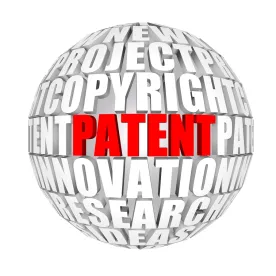In CardioNet, LLC v. InfoBionic, Inc., the Federal Circuit found that the medical device claims at issue were “directed to” patent-eligible subject matter under 35 USC § 101. The district court had reached the opposite conclusion at the motion to dismiss stage, finding the claims ineligible under the “abstract idea” category of judicial exceptions. This case underscores the value of establishing eligibility at step one of the Alice/Mayo framework.
The Patent At Issue
The patent at issue was CardioNet’s U.S. Patent No. 7,941,207, directed to devices for detecting and reporting atrial fibrillation or atrial flutter in a patient. Claim 1 is reproduced below:
1. A device, comprising:
a beat detector to identify a beat-to-beat timing of cardiac activity;
a ventricular beat detector to identify ventricular beats in the cardiac activity;
variability determination logic to determine a variability in the beat-to-beat timing of a collection of beats;
relevance determination logic to identify a relevance of the variability in the beat-to-beat timing to at least one of atrial fibrillation and atrial flutter; and
an event generator to generate an event when the variability in the beat-to-beat timing is identified as relevant to the at least one of atrial fibrillation and atrial flutter in light of the variability in the beat-to-beat timing caused by ventricular beats identified by the ventricular beat detector.
As explained by the Federal Circuit, “the device detects beat-to-beat timing of cardiac activity, detects premature ventricular beats (irregular beats that interrupt the normal heart rhythm), and determines the relevance of the beat-to-beat timing to atrial fibrillation or atrial flutter, taking into account the variability in the beat-to-beat timing caused by premature ventricular beats.”
The District Court Decision
On InfoBionic’s motion, the district court evaluated the claims for eligibility under the two-step Alice/Mayo framework. At the first step, the district court determined that the claims were directed to the abstract idea that atrial fibrillation and atrial flutter “can be distinguished by focusing on the variability of the irregular heartbeat.” At the second step, the district court recognized that the idea “may well improve the field of cardiac telemetry,” but found that insufficient without “improvements to any particular computerized technology.”
The Federal Circuit Decision
The Federal Circuit Decision was authored by Judge Stoll and joined by Judge Plager. Judge Dyk concurred with the majority’s determination of eligibility but dissented from other aspects of the majority opinion.
As in another recent non-diagnostic method case, the Federal Circuit determined that the claims were “directed to” patent-eligible subject matter at step one of the Alice/Mayo framework:
When read as a whole, and in light of the written description, we conclude that claim 1 of the ’207 patent is directed to an improved cardiac monitoring device and not to an abstract idea. In particular, the language of claim 1 indicates that it is directed to a device that detects beat-to-beat timing of cardiac activity, detects premature ventricular beats, and determines the relevance of the beat-to-beat timing to atrial fibrillation or atrial flutter, taking into account the variability in the beat-to-beat timing caused by premature ventricular beats identified by the device’s ventricular beat detector.
Quoting McRO, Inc. v. Bandai Namco Games Am. Inc., 837 F.3d 1299 (Fed. Cir. 2016), the Federal Circuit explained:
In our view, the claims “focus on a specific means or method that improves” cardiac monitoring technology; they are not “directed to a result or effect that itself is the abstract idea and merely invoke generic processes and machinery.”
Addressing the district court decision, the Federal Circuit noted:
At the heart of the district court’s erroneous step one analysis is the incorrect assumption that the claims are directed to automating known techniques. …. [T]he written description does not disclose that doctors performed the same techniques as the claimed device in diagnosing atrial fibrillation or atrial flutter. …. [I]t is difficult to fathom how doctors mentally or manually used “logic to identify the relevance of the variability [in the beat-to-beat timing] using a nonlinear function of a beat-to-beat interval” as required by claim 10. ….
The Federal Circuit also echoed McRO’s warning against “oversimplifying the claims by looking at them generally and failing to account for the specific requirements of the claims”:
[T]he claims of the ’207 patent do not merely collect electronic information, display information, or embody mental processes. …. Rather, as discussed above, they fit into the class of claims that focus on “an improvement in computers [and other technologies] as tools.”
Thus, the Federal Circuit found the claims eligible at step one of the two-step Alice/Mayo framework.
Judge Dyk’s Dissent
Judge Dyk “agree[d] with the majority that the claims have not been shown to be patent ineligible under section 101,” but disagreed with what he refers to as dicta in the majority opinion. In particular, Judge Dyk disagrees with the majority’s conclusion that “step one of the Alice framework does not require an evaluation of the prior art or facts outside of the intrinsic record regarding the state of the art at the time of the invention,” According to Judge Dyk, “No case has ever said that the nature of a longstanding practice cannot be determined by looking at the prior art.”




 />i
/>i

